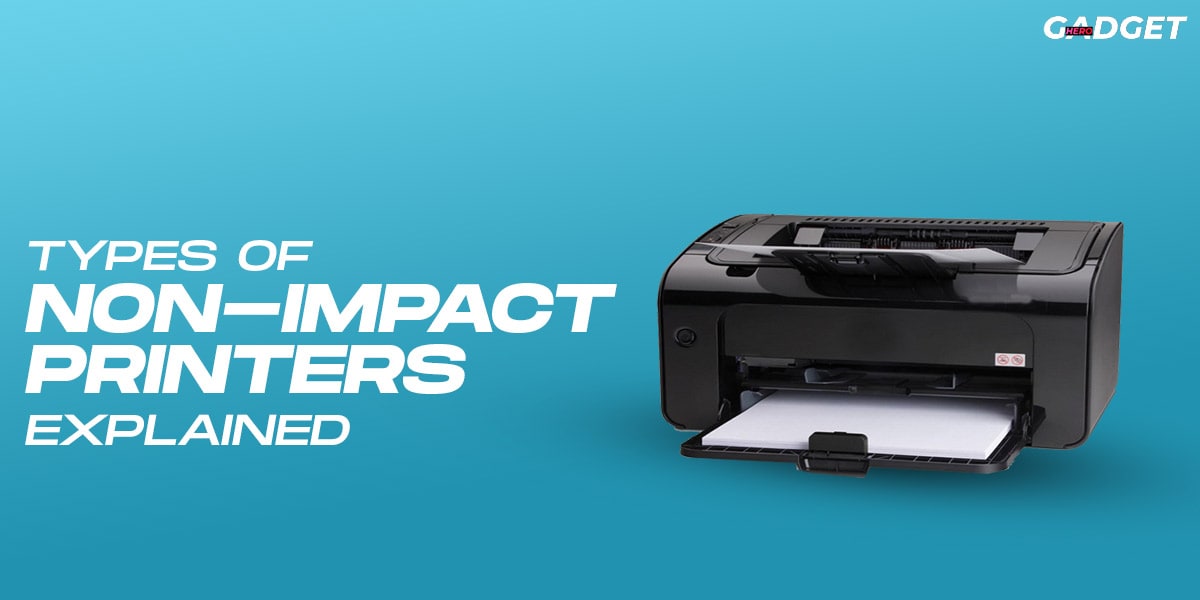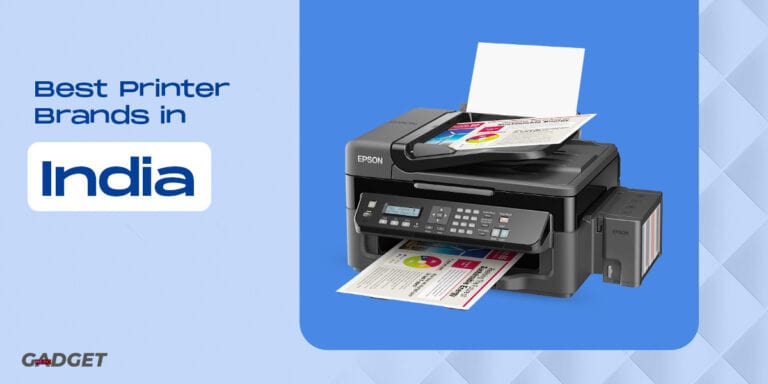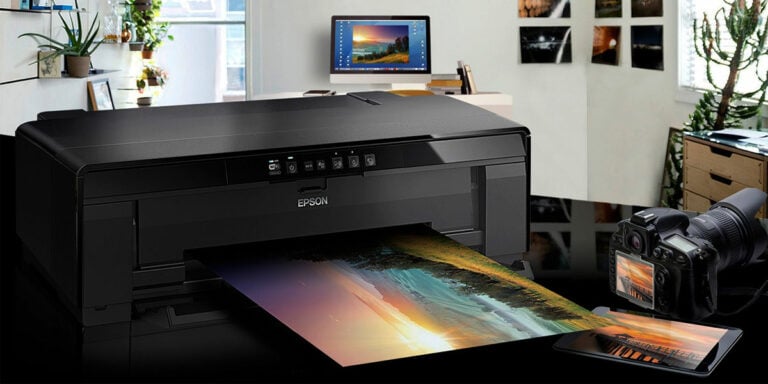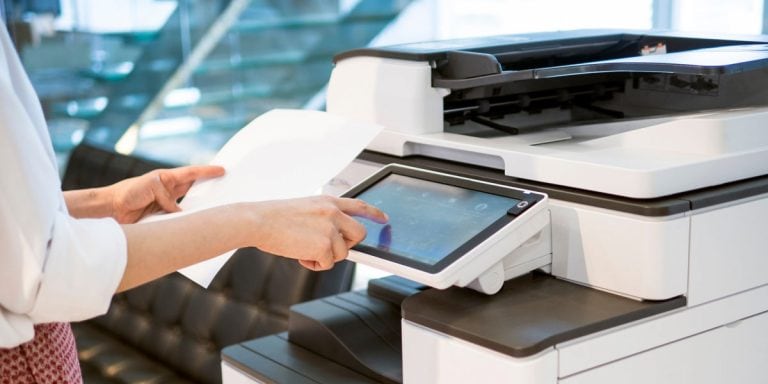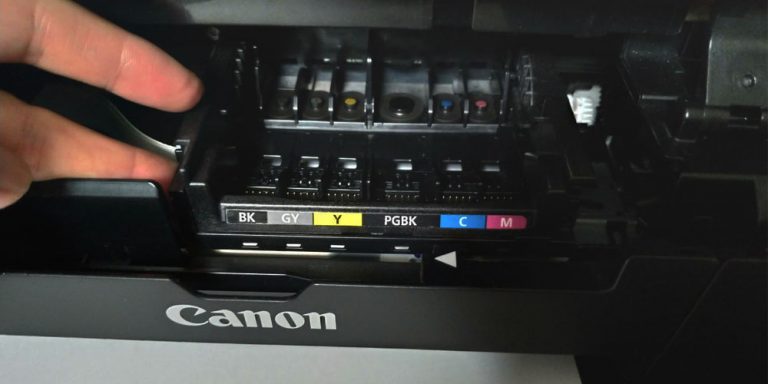Types Of Non-Impact Printers | Explained
The term “non-impact printer” refers to any type of printer that does not use any mechanical force or pressure to create the printed image. Instead, these printers use heat, laser, or inkjet technology to transfer the image onto the printing surface. The inkjet printer is the most common type of non-impact printer, which uses heat and ink to create an image.
In contrast, an “impact printer” uses mechanical force or pressure to transfer the image onto the printing surface. The most common type of impact printer is the dot matrix printer, which uses a series of pins to create the image.
Impact printers are generally considered to be slower and less efficient than non-impact printers, as they require more time and effort to produce the image.
Due to the increase popularity of non-impact printers, many popular printer brands started manufacturing non-impact printers to appeal to the consumer. We, will look at types of non-impact printers and how they differentiate from impact printers.
What Are Non-Impact Printers?
The printing industry has come a long way since the first printing press was invented in the 15th century. Today, we have a wide range of printing equipment and technology, from traditional impact printers to more modern non-impact printers.
Non-impact printers use laser, inkjet, or thermal technology to transfer the image onto the printing surface. These printers are the most widely used type of printers today, as they are more efficient, faster, and produce higher-quality images.
Types Of Non-Impact Printers
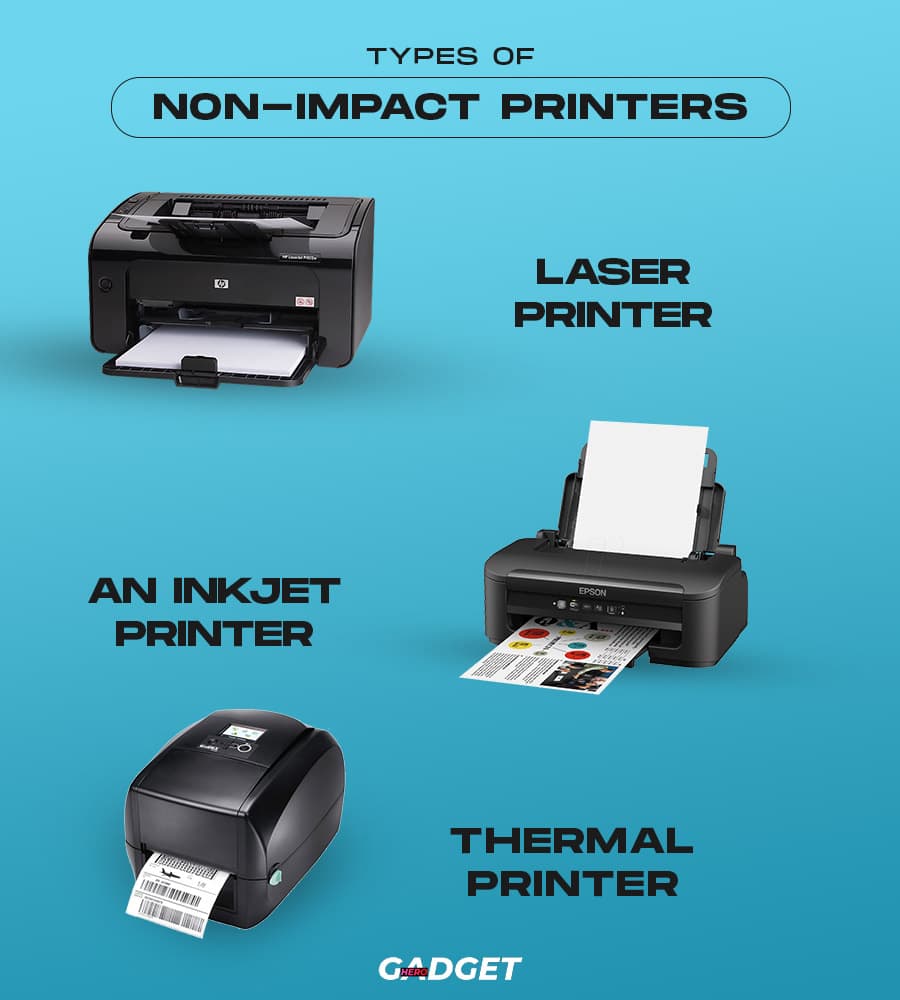
1. Laser Printer
A laser printer is a type of non-impact printer that uses a laser beam to transfer the image onto the printing surface. The laser beam is directed onto a rotating drum, which then transfers the image onto the paper. Laser printers are known for their high-quality images, speed, and reliability.
The most notable benefit of a laser printer is its speed. Laser printers can print at speeds of up to 50 pages per minute (ppm), making them suitable for high-volume printing jobs. Additionally, laser printers produce high-quality images with sharp, clear text and vibrant colours. They are also very reliable, as they are less prone to jams or other mechanical issues.
The main disadvantage of a laser printer is its cost. Laser printers are generally more expensive than other types of printers, as they require more sophisticated technology to produce the image. Laser printers are also unsuitable for specific printing tasks, such as printing on glossy or textured surfaces.
2. An Inkjet Printer
It is a type of non-impact printer that uses inkjet technology to transfer the image onto the printing surface. The inkjet technology uses a series of nozzles to spray tiny droplets of ink onto the paper, creating the image. Inkjet printers are known for their versatility, as they are capable of producing a wide variety of images, from text and graphics to photos.
The most notable benefit of an inkjet printer is its versatility. Inkjet printers are capable of producing a wide variety of images, from text and graphics to photos. Additionally, inkjet printers are generally less expensive than other types of printers, making them a cost-effective option for home and small business users.
The main disadvantage of an inkjet printer is its speed. Inkjet printers are generally slower than other types of printers, as they require more time to produce the image. Additionally, inkjet printers are prone to clogs and other mechanical issues, which can cause delays in printing.
3. Thermal Printer
A thermal printer is a type of non-impact printer that uses heat to transfer the image onto the printing surface. The thermal printer uses a heated element to melt the ink onto the paper, creating the image. Thermal printers are known for their speed and reliability, as they are capable of printing at speeds of up to 150 ppm.
The most notable benefit of a thermal printer is its speed. Thermal printers can print at speeds of up to 150 ppm, making them ideal for high-volume printing jobs. Additionally, thermal printers produce high-quality images with sharp, clear text and vibrant colours. They are also very reliable, as they are less prone to jams or other mechanical issues.
The main disadvantage of a thermal printer is its cost. Thermal printers are generally more expensive than other types of printers, as they require more sophisticated technology to produce the image. Additionally, thermal printers are not suitable for specific printing tasks, such as printing on glossy or textured surfaces.
Impact vs Non-Impact Printer
| Specification | Impact Printers | Non-Impact Printers |
| Speed | Slow | Fast |
| Reliability | Reliable | Reliable |
| Noise | Noisy | Quite |
| Maintenance | Regular maintenance needed | Minimal maintenance needed |
| Cost | Affordable | Expensive |
| Paper type | Variety of paper surfaces | Specific type of paper. |
| Printing process | Uses hammers, pins, or wheels to hit against an inked ribbon to print on paper. | Uses a spray of ink, laser, or heat and pressure to execute their printing operation. |
| Print quality | Low-quality prints | High-quality prints |
Conclusion
Non-impact printers are a great option for those who need to print text, graphics, photos, and other high-resolution images. These printers are fast, reliable, and produce high-quality images. When choosing the right non-impact printer for your needs, it is important to consider the types of tasks you need to print and the benefits and disadvantages of each type of printer.

